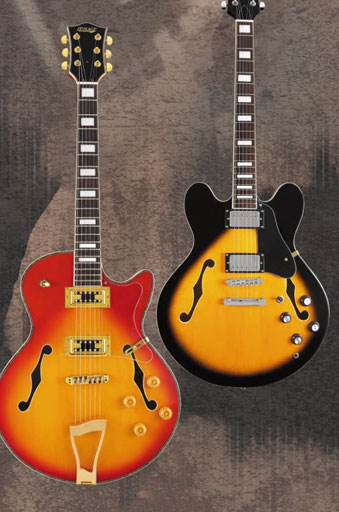
Securing Intellectual Property When Manufacturing Guitars in China
Introduction
Manufacturing guitars in China offers significant cost advantages and access to skilled craftsmanship, but protecting your intellectual property (IP) presents unique challenges. China has made substantial improvements to its IP protection system in recent years, yet foreign companies still need to implement comprehensive strategies to safeguard their designs, trademarks, and proprietary manufacturing techniques. This guide outlines practical steps to secure your guitar-related intellectual property when working with Chinese manufacturers.
Understanding the Risks
Before entering production in China, it's crucial to recognize the specific IP risks associated with guitar manufacturing:
1. Design copying: Your unique guitar body shapes, headstock designs, and aesthetic elements can be replicated
2. Technical replication: Specialized bracing patterns, neck joints, and other structural innovations may be duplicated
3. Material imitation: Proprietary tonewood treatments or composite materials could be reverse-engineered
4. Brand infringement: Counterfeit guitars bearing your trademarks might appear in domestic or international markets
5. Manufacturing overruns: Factories may produce extra units beyond your order quantity for unauthorized sale
Pre-Production IP Protection Measures
1. Register Your IP in China
China operates on a "first-to-file" system for most IP rights, making registration essential:
- Trademarks: Register your brand name, logo, and any distinctive model names in China before disclosing them to manufacturers. File with the China National Intellectual Property Administration (CNIPA) under Class 15 (musical instruments).
- Patents: For innovative technical features (novel bridge designs, unique tuning systems, etc.), consider:
- Utility model patents (10-year protection)
- Design patents (15-year protection for aesthetic elements)
- Copyrights: Register original guitar body designs as artistic works, though protection is limited to exact copies.
2. Implement Strong Contractual Protections
Your manufacturing agreement should include:
- Confidentiality clauses: Define what constitutes proprietary information
- Non-compete provisions: Restrict the factory from making similar products for competitors
- IP ownership language: Clearly state you retain all rights to designs and innovations
- Audit rights: Allow inspections to verify compliance with production quantities
- Penalties for breach: Establish meaningful consequences for IP violations
3. Conduct Thorough Factory Due Diligence
- Investigate the manufacturer's history with foreign clients
- Check for existing litigation or IP complaints
- Visit the facility to assess their operations and security measures
- Request references from other foreign brands they work with
Production Phase Protection Strategies
1. Controlled Information Sharing
Practice the principle of "need-to-know" disclosure:
- Provide only essential technical specifications for each component
- Separate different manufacturing processes among multiple suppliers when possible
- Use numbered drawings rather than complete technical packages
2. Physical Security Measures
- Implement secure storage for prototypes and samples
- Control access to sensitive production areas
- Use serial numbers or hidden markings to track genuine products
3. Quality Control as IP Protection
- Station your own quality inspectors at the factory
- Implement strict material tracking systems
- Maintain control over critical components (e.g., sourcing pickups separately)
4. Documentation and Chain of Custody
- Maintain detailed records of all design transmissions
- Document all meetings and approvals
- Establish clear procedures for handling design changes
Post-Production IP Enforcement
1. Monitoring the Market
- Regularly check Chinese e-commerce platforms (Taobao, JD.com) for counterfeits
- Monitor international markets for unauthorized copies
- Use brand protection services that specialize in Chinese manufacturing
2. Taking Action Against Infringement
For identified violations:
- Administrative actions: File complaints with local market supervision bureaus
- Customs recordation: Register your IP with Chinese customs to block exports of counterfeits
- Civil litigation: Pursue cases in Chinese courts, which have become more favorable to foreign IP holders
- Criminal complaints: For large-scale counterfeiting operations
3. Building Relationships with Authorities
- Develop connections with local IP offices
- Participate in industry associations that advocate for IP protection
- Stay informed about legal developments in China's IP system
Alternative Manufacturing Approaches
Consider these strategies to further mitigate risk:
1. Multi-country manufacturing: Split production between China and another country for critical components
2. Dual sourcing: Maintain relationships with backup manufacturers to reduce dependence on one factory
3. Local assembly: Import components from China for final assembly in your home country
Cultural Considerations in IP Protection
Understanding Chinese business culture can enhance your IP protection:
- Building strong guanxi (relationships) with manufacturers creates mutual respect
- Face-saving approaches often work better than confrontational tactics
- Long-term partnerships incentivize factories to protect your IP
- Chinese New Year and other holidays affect enforcement timelines
Technological Solutions for IP Protection
Emerging technologies offer new protection tools:
1. Blockchain: Timestamp and verify design documents
2. RFID tags: Embed trackable elements in genuine products
3. Holographic labels: Use difficult-to-replicate authentication markers
4. Digital watermarking: Embed hidden identifiers in product designs
Working with Chinese Partners on IP Protection
Successful strategies often involve:
- Educating your Chinese partners about why IP protection benefits both parties
- Offering incentives for maintaining confidentiality
- Creating win-win situations where respecting your IP aligns with their business interests
- Being transparent about your concerns while showing respect for Chinese laws and customs
Conclusion
Securing intellectual property when manufacturing guitars in China requires a multi-layered approach combining legal registrations, contractual safeguards, operational controls, and ongoing vigilance. While challenges exist, many foreign instrument manufacturers successfully protect their designs and brands through comprehensive planning and proactive management of their Chinese manufacturing relationships. By implementing these strategies before, during, and after production, you can significantly reduce IP risks while benefiting from China's manufacturing capabilities.
The key is to view IP protection as an ongoing process rather than a one-time action. As China continues to strengthen its IP legal framework and enforcement mechanisms, foreign guitar brands that take proper precautions can confidently leverage Chinese manufacturing while safeguarding their valuable intellectual property assets.

Copyright © 2003-2025 Longsheng Musical Instrument Co., Ltd. Powered by:Lucky Cloud Network Technology All rights reserved.
SitemapThis website uses cookies to ensure you get the best experience on our website.
Comment
(0)